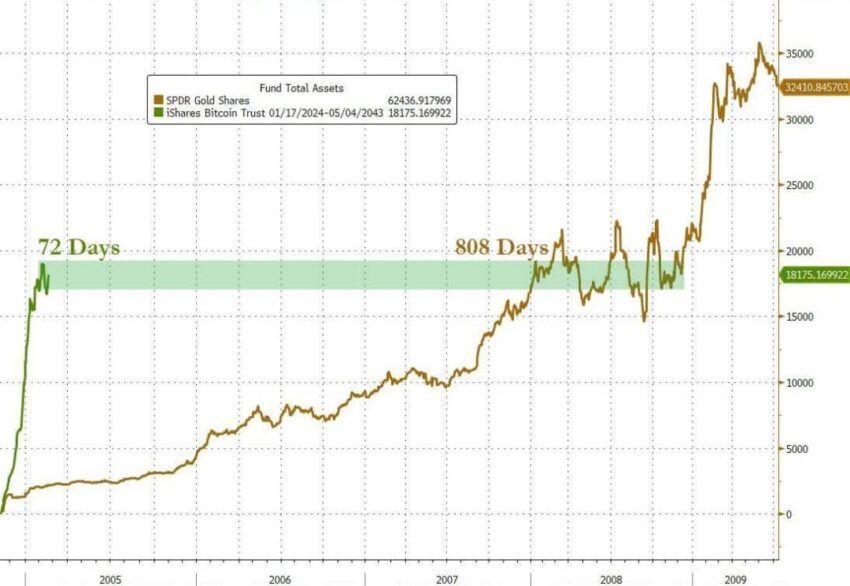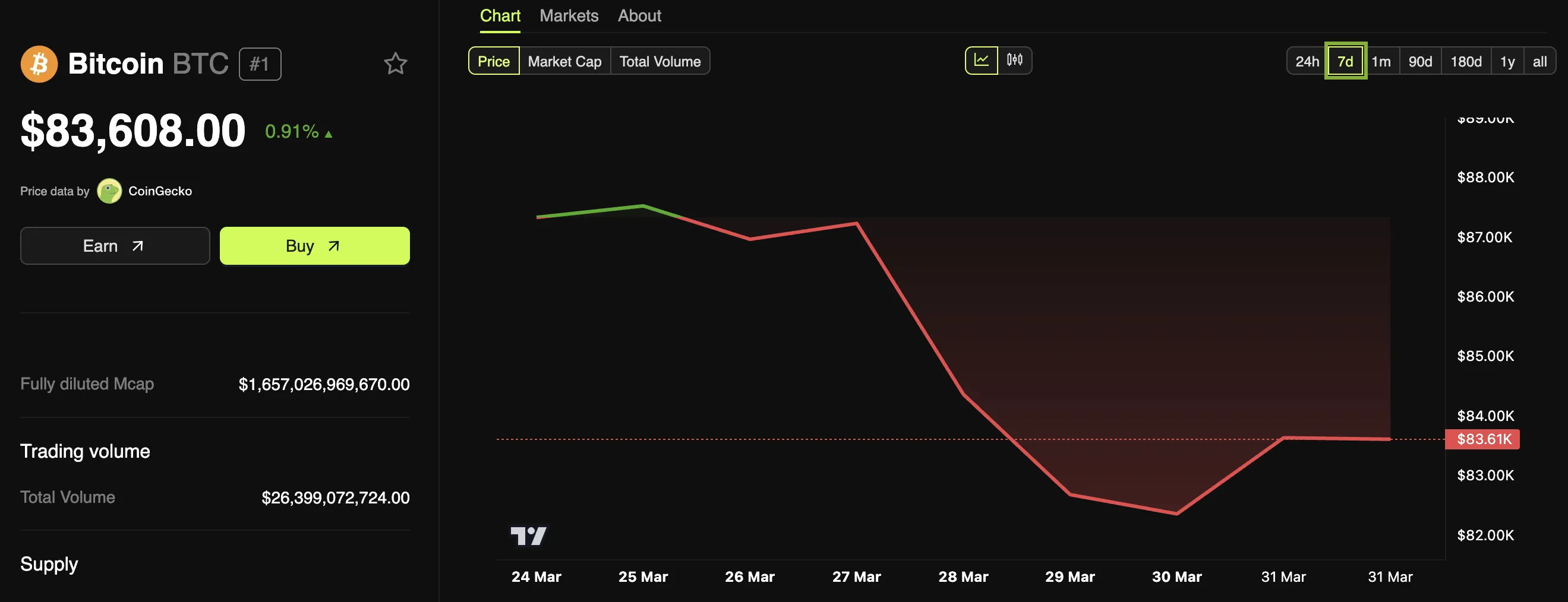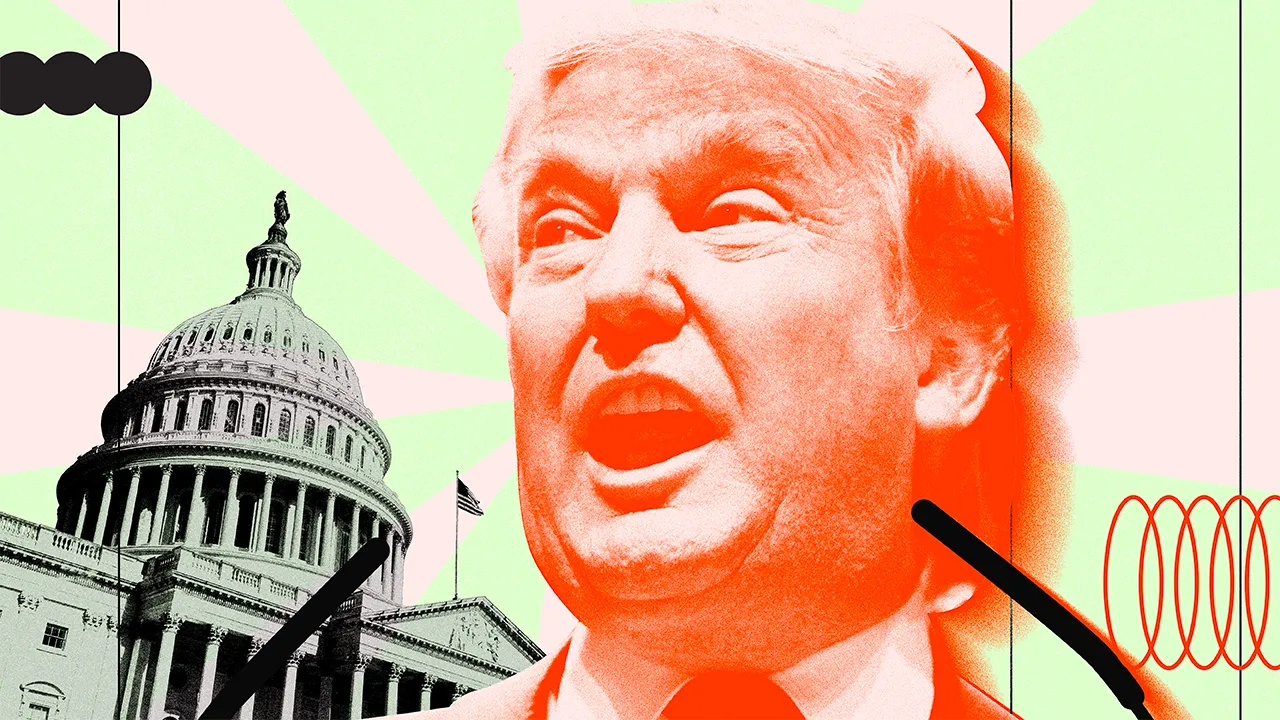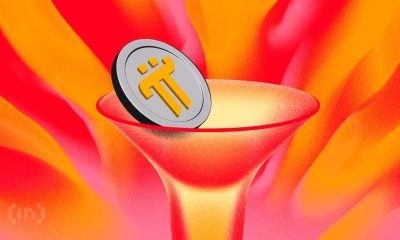Bitcoin
Bitcoin ETFs Spark Frenzy, But Can It Ignite 8 Year Bull Market?

Since the US Securities and Exchange Commission (SEC) approved spot Bitcoin exchange-traded funds (ETFs) on January 11, 2024, the crypto market has experienced a significant recovery. This culminated on March 14, 2024, when Bitcoin (BTC) reached a new all-time high (ATH) of $73,737.
This uptrend isn’t confined to the US alone. Hong Kong just launched its spot Bitcoin and Ethereum ETFs, while Australia is preparing to launch its own versions of spot Bitcoin ETFs.
The global enthusiasm mirrors the community’s optimistic view of Bitcoin as not just a currency but a potential digital counterpart to gold.
Can Bitcoin ETFs Help Sustain 8-Year Bull Rally?
The narrative of Bitcoin as a store of value and an inflation hedge brings it close to gold’s market stance, with comparisons now extending to their respective ETFs. Historical precedents offer a compelling storyline.
The gold ETF launch in 2004 triggered a nearly 8-year bull market. The first gold ETF, SDPR Gold Shares, was listed on the New York Stock Exchange (NYSE) on November 1, 2004, when gold was priced at $450.80 per ounce. It then consistently grew, reaching $1,825 on August 1, 2011. In 2024, gold has successfully achieved a price of $2,392 on April 19.
However, according to a post by crypto YouTuber Altcoin Daily on X (formerly Twitter), the BlackRock Bitcoin ETF achieved in 70 days what took the gold ETF over 800 days in assets under management (AUM). He highlighted the unprecedented demand for Bitcoin compared to gold’s initial days in the ETF sphere.
“This is just the beginning…” Altcoin Daily noted.
Read more: Crypto ETN vs. Crypto ETF: What Is the Difference?

Supporting this perspective, Bitcoin analyst Willy Woo pointed out the current fiscal dynamics.
“Now that the monetary inflation rate of Bitcoin has dropped below Gold, it will be interesting to see if its market cap will exceed gold according to the stock to flow [S2F] thesis,” Woo commented.
He anticipates that Bitcoin will align with its S2F valuation but with a lag of 5-10 years. Woo cites the slower pace of global financial systems in adopting such innovations.
Bitcoin’s technological architecture might give it another edge over gold. Events like the quadrennial halving are designed to reduce the number of new Bitcoins entering the market, theoretically increasing its value over time.
Indeed, historically speaking, post-halving periods have led to substantial price increases. The 2012 halving preceded a jump from $12 to over $1,000 by late 2013. Similarly, the 2016 halving saw prices soar from around $650 to nearly $20,000 by December 2017. Finally, the 2020 halving pushed prices from around $8,000 to $69,000 by November 2021.
These patterns suggest a bullish outlook, albeit with the caveat that price surges are typically long-term rather than immediate. Renowned analyst PlanB reaffirmed this. They predicted significant future growth despite short-term fluctuations.
PlanB noted a bullish outlook that aligns with historical data and market analysis despite current market variances.
“BTC > $100,000 in 2024. BTC top > $300,000 in 2025,” PlanB stated.
Price Retreats Despite ETF Success
Yet, regardless of speculative optimism and historical trends, today’s market movement paints a different picture. At the time of writing, Bitcoin trades at $62,035, a slight decrease of 0.47% over the last 24 hours.
Similarly, spot gold is also experiencing modest movement, trading at $2,311. This number represents a decrease of approximately 1.02% from yesterday’s price.
Furthermore, data from SoSo Value indicates that US spot Bitcoin ETFs have recorded daily outflows of $51.53 million as of April 29, 2024. This marks the fourth consecutive day of negative flows. Even BlackRock’s iShares Bitcoin Trust (IBIT), previously a top performer, recorded no new inflows during the period.
Read more: Bitcoin Price Prediction 2024/2025/2030

These indicators suggest a cautious approach. While the enthusiasm around Bitcoin ETFs is palpable, and comparisons to gold’s ETF-driven rally are tempting, the reality on the trading floors tells a story of volatility and speculative uncertainty.
With its complex interplay of technology, economics, and global regulations, Bitcoin presents a unique investment perspective that may or may not parallel the historical ascent of gold. Investors and spectators alike would do well to observe these developments closely, considering both the potential and the pitfalls of this digital asset class.
Disclaimer
In adherence to the Trust Project guidelines, BeInCrypto is committed to unbiased, transparent reporting. This news article aims to provide accurate, timely information. However, readers are advised to verify facts independently and consult with a professional before making any decisions based on this content. Please note that our Terms and Conditions, Privacy Policy, and Disclaimers have been updated.
Bitcoin
$500 Trillion Bitcoin? Saylor’s Bold Prediction Shakes the Market!


Michael Saylor, one of the most outspoken supporters of Bitcoin, is back and bolder than ever. In a recent statement, the former MicroStrategy CEO predicted that the alpha coin will potentially hit a $500 trillion market cap. Saylor’s bold prediction for the world’s top digital asset comes during the intensified push for a Strategic Bitcoin Reserve (SBR).
In his latest pro-crypto statement, Saylor argued that the digital asset will “demonetize gold”, then it will demonetize real estate, which he calculated as 10x more than gold. To summarize his argument, Saylor further states that Bitcoin will demonetize “all long-term store of value”.
Push For SBR Gains Ground
Saylor’s latest statement comes as Congress intensifies its efforts to build the country’s BTC holdings. United States President Donald Trump formalized the plans to build crypto holdings through an executive order to establish a strategic crypto reserve that will initially include $17 billion worth of BTC that the country currently controls.
Michael Saylor: Bitcoin Headed to $500 Trillion 🚀₿
– At Digital Asset Summit, MicroStrategy’s Saylor predicted:
• BTC will reach $500T market cap
• It will “demonetize gold, real estate & all long-term stores of value”
– Capital shift: “From physical to digital, from…— AFV GLOBAL (@afvglobal) March 28, 2025
According to the president, additional acquisitions of cryptocurrency are allowed, provided these are done through “budget-neutral” approaches. Senator Cynthia Lummis initially proposed in the Senate, through the Bitcoin Act, the plan to create a Bitcoin reserve. Under the proposal, the administration can purchase 1 million Bitcoin to complement the reserve.
Saylor Explains Crypto’s Role During Blockchain Summit
Saylor’s latest prediction on Bitcoin was made during his appearance at the DC Blockchain Summit. He was joined on stage by Jason Les, the CEO of Rito Platforms, and Lummis, the principal author of the Bitcoin Act.
During the program, Saylor was asked about America’s need for Bitcoin. Saylor answered with conviction, saying the rising importance of BTC is inevitable and will happen with the US’ participation. During his talk, he shared that Bitcoin, created by the enigmatic Satoshi Nakamoto, is unstoppable.
Image: Gemini Imagen
Saylor added that the premier digital asset is the next stage in money’s evolution, and it’s currently absorbing value from traditional assets like currency reserves and real estate.
Saylor Predicts Top Coin Will Reach $500 Trillion In Market Cap
During his talk, Saylor predicted that BTC will eventually grow from $2 billion to $20 billion, which can hit $200 billion and beyond. Finally, he thinks the asset can achieve a $500 trillion market capitalization, reflecting more than 29,000% increase from its current market capitalization of $1.67 trillion.
Saylor’s recent bold prediction aligns with his firm conviction and support for the asset. He argues that Bitcoin’s unique features, its decentralized nature and fixed supply, make it a perfect hedge against economic uncertainties like inflation.
Featured image from Gemini Imagen, chart from TradingView

Editorial Process for bitcoinist is centered on delivering thoroughly researched, accurate, and unbiased content. We uphold strict sourcing standards, and each page undergoes diligent review by our team of top technology experts and seasoned editors. This process ensures the integrity, relevance, and value of our content for our readers.
Bitcoin
Big Bitcoin Buy Coming? Saylor Drops a Hint as Strategy Shifts


A top executive of Strategy, formerly MicroStrategy, posted a cryptic post on X, fueling speculation that the company might be positioning itself to make another Bitcoin acquisition soon.
Strategy Executive Chairman Michael Saylor suggested in an X post that the company would purchase additional Bitcoins to boost its current BTC holding of $42 billion.
Saylor To Buy More Bitcoin
In a typical Saylor fashion, the Strategy top honcho disclosed the company’s BTC investment portfolio tracker, an indicator that the company is planning an upcoming Bitcoin acquisition.
Needs even more Orange. pic.twitter.com/lV5qgUP6oY
— Michael Saylor⚡️ (@saylor) March 30, 2025
“Needs even more Orange,” Saylor said in the post, referring to the orange circles in the graph (below), which represents the company’s Bitcoin purchases since September 2020.
Once again, Saylor’s post intrigued the crypto community because many believe the graph conveys a message that Strategy will buy more BTC soon.
Strategy Stockpile: Over $40B BTC
According to Saylor, Strategy’s Bitcoin holding now stands at more than $42 billion. Despite the company’s already huge investment in BTC, it seems the company will continue to increase its holdings, believing in the value of crypto.
Strategy has made great strides in building its BTC reserve from its initial Bitcoin purchase of 21,454 coins worth $250 million in August 2020.
On March 17, the company announced its latest acquisition of 130 Bitcoins for about $10.7 million in cash, with an average price of around $82,981 per coin.
Meanwhile, Onchain Lens reported on Sunday that Strategy moved a considerable number of its coins to new addresses.
“Strategy (formerly MicroStrategy) transferred 7,383.25 $BTC worth $612.92M to three new addresses on March 30,” Onchain Lens said in a post.
Analysts believe the company is influencing the crypto market to strengthen its position, as its chairman has consistently urged others never to sell their Bitcoin.
Strategy (formerly #MicroStrategy) has transferred 7,383.25 $BTC worth $612.92M into 3 new addresses.https://t.co/8KVn8hYNDL pic.twitter.com/g92HZCvoLp
— Onchain Lens (@OnchainLens) March 30, 2025
Fueling BTC Adoption
Many market observers argued that Saylor’s BTC investment strategy might have driven crypto adoption. Ironically, Saylor was pessimistic about Bitcoin’s future in 2013, predicting that the flagship crypto would fail.
However, in 2020, Saylor became one of Bitcoin’s staunch advocates and has now been preaching the merits of the firstborn crypto, urging companies to acquire Bitcoin.
For example, Visa planned to let its customers spend digital assets directly at 70 million merchants. At the same time, financial institutions such as JPMorgan and Morgan Stanley have begun offering crypto investments to wealthy clients and institutional investors.
Featured image from Times Now, chart from TradingView

Editorial Process for bitcoinist is centered on delivering thoroughly researched, accurate, and unbiased content. We uphold strict sourcing standards, and each page undergoes diligent review by our team of top technology experts and seasoned editors. This process ensures the integrity, relevance, and value of our content for our readers.
Bitcoin
Strategy Adds 22,048 BTC for Nearly $2 Billion

Michael Saylor announced that Strategy purchased nearly $2 billion worth of Bitcoin. This is a massive leap over last week’s purchase, which was already quite substantial.
Nonetheless, the firm was only able to make this acquisition thanks to major stock offerings. Bitcoin’s price has been sinking over the last few weeks, and this could mature into a potential liquidation crisis.
Strategy Maintains Bitcoin Purchases
Since Strategy (formerly MicroStrategy) began acquiring Bitcoin, it’s become one of the world’s largest BTC holders. This plan has totally reoriented the company around its massive acquisitions, inspiring other firms to take up the same plan.
Today, the firm’s Chair, Michael Saylor, announced another purchase, much larger than the last few.
“Strategy has acquired 22,048 BTC for ~$1.92 billion at ~$86,969 per bitcoin and has achieved BTC Yield of 11.0% YTD 2025. As of 3/30/2025, Strategy holds 528,185 BTC acquired for ~$35.63 billion at ~$67,458 per bitcoin,” Saylor claimed via social media.
Strategy’s latest Bitcoin acquisition, worth just shy of $2 billion, is a major commitment. In February, the firm made a similar $2 billion purchase, and it was followed by a tiny $10 million buy and a $500 million one. The $500 million purchase, which took place on March 24, only happened thanks to a huge new stock offering. This move further cements Strategy’s faith in BTC.
By making these billion-dollar buys, Strategy is able to buttress the entire market’s confidence in Bitcoin. However, investors should be aware of a few potential cracks.
First of all, Bitcoin’s performance is a little subpar at the moment. Despite hitting an all-time high recently, Bitcoin is having its worst quarter since 2019, and there is not much forward momentum.

This could cause a unique problem for the company. Since Strategy is a cornerstone of market confidence, it is unable to offload its assets without jeopardizing Bitcoin’s price.
The firm’s debts are growing at a fast rate, and this could have dangerous implications if Bitcoin keeps falling. Strategy could be forced to liquidate, even if that seems unlikely now.
Still, it’s important to remember that these are only possible scenarios. Strategy has maintained its consistent Bitcoin investments for nearly five years, and it’s paid off tremendously well. However, if it keeps taking on billions in fresh debt obligations, this faith will turn into a gamble with very high stakes.
Disclaimer
In adherence to the Trust Project guidelines, BeInCrypto is committed to unbiased, transparent reporting. This news article aims to provide accurate, timely information. However, readers are advised to verify facts independently and consult with a professional before making any decisions based on this content. Please note that our Terms and Conditions, Privacy Policy, and Disclaimers have been updated.
-

 Market20 hours ago
Market20 hours agoTrump Family Gets Most WLFI Revenue, Causing Corruption Fears
-

 Ethereum20 hours ago
Ethereum20 hours agoEthereum’s Price Dips, But Investors Seize The Opportunity To Stack Up More ETH
-

 Market23 hours ago
Market23 hours agoBitcoin Mining Faces Tariff Challenges as Hashrate Hits New ATH
-

 Regulation23 hours ago
Regulation23 hours agoUSDC Issuer Circle Set To File IPO In April, Here’s All
-

 Market22 hours ago
Market22 hours agoPi Network Struggles, On Track for New All-Time Low
-

 Bitcoin22 hours ago
Bitcoin22 hours agoStrategy Adds 22,048 BTC for Nearly $2 Billion
-

 Market21 hours ago
Market21 hours agoBNB Breaks Below $605 As Bullish Momentum Fades – What’s Next?
-

 Market17 hours ago
Market17 hours agoBlackRock’s Larry Fink Thinks Crypto Could Harm The Dollar
























